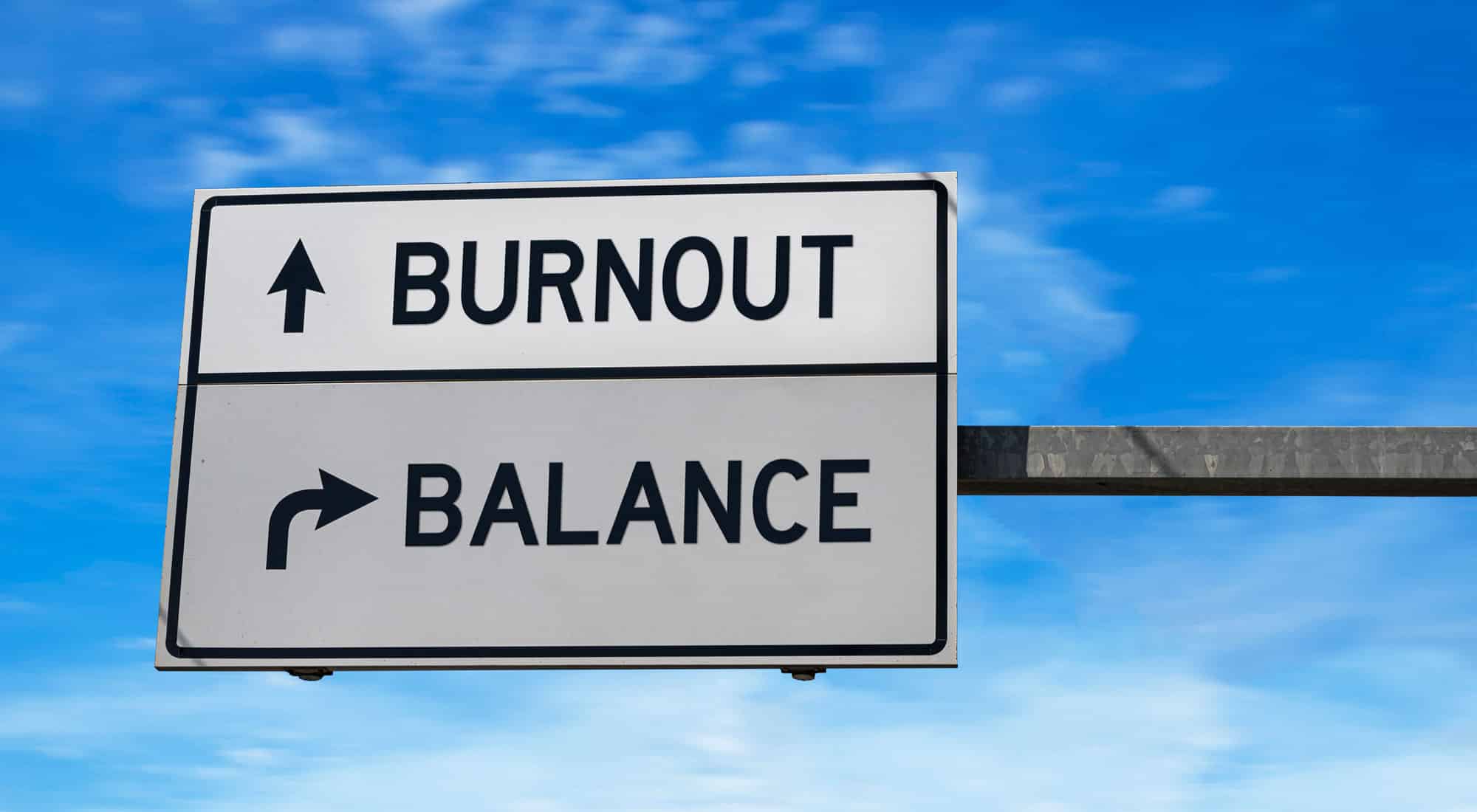By Melissa Riddle Chalos
Workforce. Even the word feels heavy, with little choice in the matter. And yet, the force of work has always been with us. It’s the same in everything from fast food to Fortune 500 companies. The struggle is real: to make ends meet, to burn both ends of the candle, to climb the ladder, and hopefully “make it” someday.
Consider the current work climate. The rise of on-demand and teleworking. The “perks” often only add to the pressure employees feel to work longer hours and deliver higher results.
A 2022 ADP Research Institute survey revealed the following:
- One in 10 employees surveyed across 17 countries in 2021 worked more than 20 unpaid hours per week.
- Workers averaged 9.2 hours of unpaid overtime per week, up 7.3 hours from 2020.
“Hustle culture is something that’s very prevalent in American culture today,” explains The Meadows’ Clinical Director Breanna Mylius in a recent Beyond Theory podcast. “It impacts almost everybody, whether you have a job or not, because there is a message in our culture [that] if you’re not working, you’re not good enough, you’re lazy, you’re mooching off the system … and when you are working, that you’re a better employee if you work longer.”
According to Mylius, the combination of success and money equals power, which she says essentially results in “killing ourselves to keep up with [the] hustle culture we’ve created around working.” It may be a slow burn, but the end result is burnout.
So What Exactly Is Burnout?
Burnout, while not a medical or clinic term, is described by PositivePsychology.com as something that occurs when an individual experiences “too much stress for a prolonged period.”
When burnout happens, a person feels devalued, unmotivated, exhausted, and often begins to disconnect. This kind of disconnect — recently coined as “quiet quitting” — negatively impacts productivity and profitability. But more importantly, on the human level, it can be lethal to overall health and well-being.
What Are the Signs of Employee Burnout?
There are many predictive indicators of employee burnout. Warning conditions, as reported by the Mayo Clinic, include:
- Lack of control/influence in the workplace
- Unclear job expectations
- Dysfunctional workplace dynamics
- Lack of social support
When these conditions exist, employees may exhibit symptoms of distress that snowball over time. According to Healthline.com, key signs of employee burnout include:
- Forgetfulness or lack of concentration
- Diminished pride in your work
- Losing sight of yourself and your goals
- Difficulty maintaining relationships and being present with loved ones
- Frustration and irritability with coworkers
- Unexplained muscle tension, pain, fatigue, and insomnia
The stress level might be manageable for a time, but there’s only so much bending you can do until a break occurs. So, before you find yourself at the breaking point, it could be helpful to spend some time learning how to help employee burnout.
Preventing Employee Burnout
Further PositivePsychology.com research reveals that employee well-being involves a balance of four dimensions:
- Work satisfaction
- Organizational respect
- Employer care
- Work-life integration
When companies balance these areas, it reduces long-term stress for employees and creates professional growth, development, and recovery. In other words, knowing how to prevent employee burnout begins with creating a work environment buoyed by compassionate leadership that values people on par with profitability, and sets employees up for mental and physical well-being.
It’s Time to Take Action
For employees experiencing the beginning signs of burnout, it’s important to get ahead of it before it spirals.
“When we’re tapped into the hustle culture,” says Mylius, “we’re not connected at all. With our bodies, oftentimes, we’re connected with whatever it is that we’re trying to do. And so we’ll run ourselves ragged. And then at the end of the day, we’re like, Why am I so tired?”
To get off the hamster wheel, it’s important to begin listening to your body and setting boundaries both inside and outside your work life.
To get off the hamster wheel, it’s important to begin listening to your body and setting boundaries both inside and outside your work life. To take action at work:
- Plan to Pivot
Look at your work deliverables for the weeks ahead, identify the priorities, and shift work that can wait.
- Delegate
Even if it goes against your hustle-culture instincts to drive every project, ask others for help.
- Say No
There’s power in verbalizing, “I simply don’t have the bandwidth at this time.”
- Clock Out
When you’re off work, focus on rest and recovery.
- Seek Support
Talk with your supervisor to establish expectations and new parameters for your workload. Communicate your need for better work-life balance with trusted coworkers and friends. Utilize your company’s employee assistance program, if they have one.
- Practice Mindfulness
The Mayo Clinic describes mindfulness as “the act of focusing on your breath flow and being intensely aware of what you’re sensing and feeling at every moment, without interpretation or judgment.” The more mindfulness you can practice, the more it will impact how well you handle stressful situations.
- Get Moving
Get more physical activity, whatever that looks like. Stress-reducing activities like yoga and meditation can take your mind off work and help you breathe easier.
- Rest Up
Be intentional and strategic about getting restorative sleep. For optimal rest, cut caffeine early in the day and avoid electronics a full hour before bedtime.
- Go for Joy
Fuel positivity by doing things that increase the calm in your life, and by spending time with loved ones and friends who elevate your well-being.
Thriving People, Thriving Business
Preventing employee burnout is both a corporate and individual responsibility. Both take time, tools, and intention to make them happen. Companies and organizations are notoriously slow to make necessary changes, especially changes perceived as unimportant to the bottom line. Individual needs vary, and sometimes the capacity for change requires a professional assist to get the ball rolling.
Here at The Meadows, we understand the importance of investing in workplace mental health. Our Meadows Employee Programs partner with companies all over the country to offer employee programs designed to help workers thrive.
Companies that take advantage of MBH’s employee programs consistently report the following:
- Decreased medical spend, relapse, recidivism, disability costs, absenteeism, and turnover rates
- Decreased symptoms of depression and anxiety
- Increased productivity, presenteeism rates, and employee net “thriving”
The bottom line is: Thriving people create thriving businesses. Whether you’re running a business, or you’re an individual struggling to survive the stress of the hustle, The Meadows is here to help.



